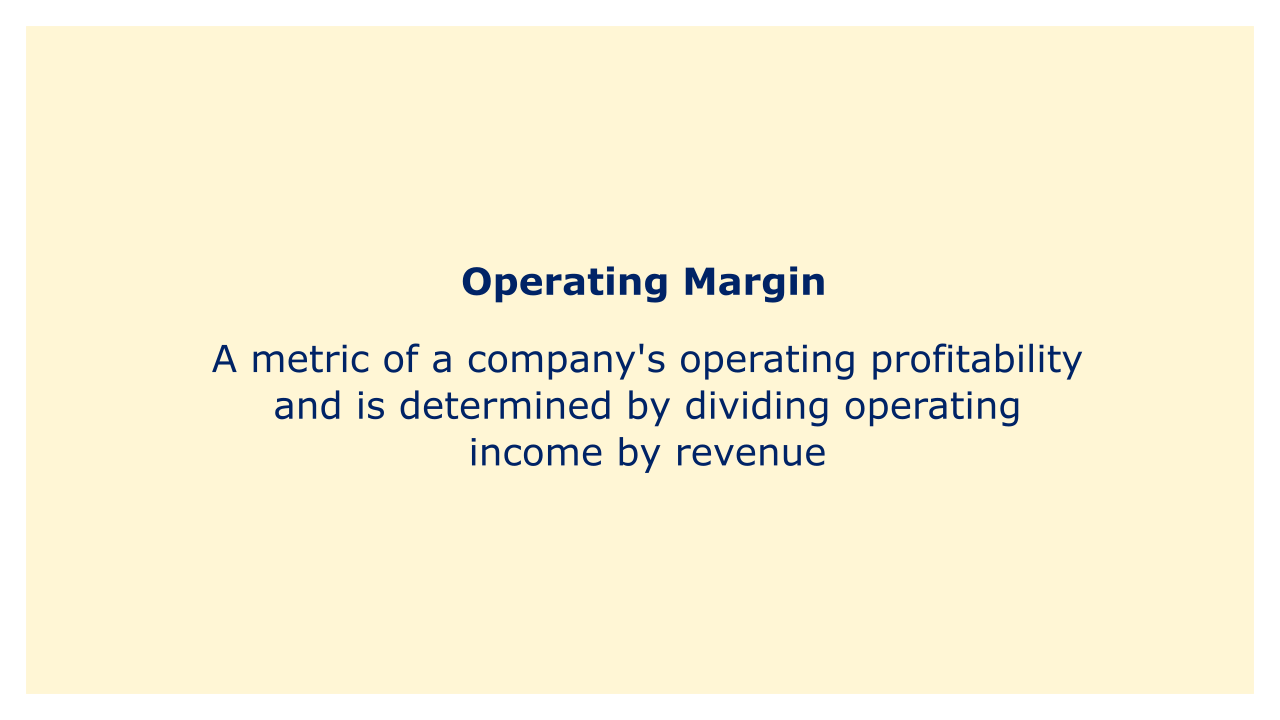 |
| Image: Moneybestpal.com |
Operating margin, also known as operating profit margin, is a metric of a company's operating profitability and is determined by dividing operating income by revenue. It is the portion of each dollar of sales that a business keeps as operating income following the deduction of all operating costs.
Operating income is the revenue derived from a company's primary business activities and is calculated by deducting operating expenses from revenue. Costs including salary and wages, rent and utilities, consumables, and depreciation are frequently included in operating expenses. Operating margin sheds light on the effectiveness and profitability of a company's main business activities by dividing operating income by revenue.
An organization with a high operating margin is likely to be profitable since it is producing a sizable amount of operating income in comparison to its revenue. An organization may struggle to create operational income if its operating margin is poor, potentially as a result of high operating costs or low revenue.
The percentage of each dollar of revenue that a corporation keeps as net income following the deduction of all costs, including interest and taxes, is referred to as net profit margin, which is comparable to operating margin. Whereas operational margin just concentrates on a company's basic business operations, net profit margin include the effects of taxes and interest.
